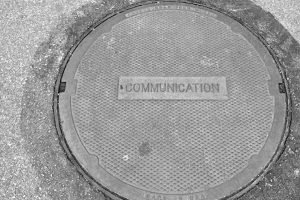
There are over a million results on Google for “communication breakdown in an organization”. Bob explains how to prevent this from happening in your workplace.


There are over a million results on Google for “communication breakdown in an organization”. Bob explains how to prevent this from happening in your workplace.

If you have ever seen the tango being performed, you have witnessed the ebb and flow of tension and release, and the perfect balance of power and acquiescence. (By Anouchka Unel (Own work) [FAL], via Wikimedia Commons) As with all so-called “lead and follow” dances, the lead must be willing to push and steer; the […]

While your faculty and students may have taken the summer off from their college assignments, you know that the work of higher education brand building never ends. Today, and every day, your college brand continues to do its daily work — on your website, social sites and across the continuum of digital and human conversation. […]

In my experience, if you want to put your higher education brand to a quick and dirty reality check — what engineers call “stress and failure” analysis — there are two places to look. First, review any and all content that’s scored high enough to be placed in the feature area of your home page […]

Colleges, and those charged with articulating why institutions matter, seldom lack for words… yet rarely learn to speak their school’s one true voice. Why so? In my experience, it has to do with how comfortable any of us can be in that stage before sudden insight arrives — in sitting with “not knowing.” I like […]

Bringing about change is tough stuff. Chip and Dan Heath, in their recent book titled “How to Change Things When Change is Hard” talk about Bright Spots, or things that are working. They wisely posit that instead of focusing on things that are broken, it’s better to talk about bright spots that are not only […]

Anyone involved with higher education branding and marketing has used such shorthand as “four-year liberal arts college” or “four-year degree.” Likewise, most colleges and financial aid sources will talk about a bachelor’s degree as a four-year effort. But the best national data tells a different story. Reports from the American Council on Higher Education and […]

F. Scott Fitzgerald famously said “The test of a first rate intelligence is the ability to hold two opposed ideas in the mind at the same time, and still retain the ability to function”. At Elliance, we have made it a habit of not settling for easy answers. Each one of us holds the torch […]

Does higher education branding actually help prospects and parents make sound choices?

…isn’t taking data from research reports and discovery sessions to come up with creative ideas for a campaign or a tagline. Honestly, that stuff is quite easy. The hardest part is letting go – of forgetting all the old notions, perceptions and sometimes predictable ways a client has communicated in the past; and replace it […]